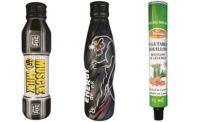Trends
Excellence In Packaging Design Begins with Pin-Sharp Color Proofing Technology
In today’s consumer product supply chain, speed-to-market is at the top of the list for many brands. While speed is ultimately the result of many functions in synergy, packaging continues to be a critical aspect of delivery and the primary vehicle through which brands communicate their spirit, values, and quality to their customers.

GMG creates software solutions that guarantee precise, predictable and repeatable color on every run.
Courtesy of GMG Americas
The emergence of digital print has made smaller print runs economically viable. Shorter runs power the brand’s ability to launch more creative, more personalized product designs and deliver them quickly to shelf. The result is more products on shelf for users to choose from and more intense competition between brands.
To perform in this environment, brands and their partners need to leverage technology that can help them work faster, with digitally repeatable processes, to shorten delivery times and show up right first time on shelf.
As a specialist in color communication across the workflow, it is critical that we listen to our customers, understand the issues and trends that affect their business, and design solutions that address their future needs. In fact, we believe our customers rely on us to take a wider, long-term view of the packaging market. This pursuit offers us some oversight over the design, technology and market trends across key sectors such as food and beverage, personal care and household goods.
Sustainability has a renewed focus in the print market and brands are driving hard to update many of their packages. Consumers are getting under the skin of sustainability; they’re engaged and want to know more about the lifetime impact of the products they purchase, from high value purchases through to food and personal care essentials. This means that in terms of sustainability, the printing process and supply chain cannot be truly separated from the product.
With the drive for more sustainable packaging comes the use of new inks and substrates. This includes the use of biodegradable soy inks, as well compostable substrate materials. As the market continues to explore the outer limits of material technology, brands face new challenges maintaining their brand equity on the packaging and delivering a consistent, high-quality color experience.
Brand owners will be pleased to hear this doesn’t just mean varying shades of green and brown.With color as part of the sustainability story, we are looking at how the optimal use of colors and inks contributes to lower carbon emissions through the supply chain.
One of the most effective ways for printers and their brand customers to harness “color for good” is by ensuring precision through effective color management. Today’s press technology is more advanced than ever, but with great flexibility can also come heightened complexity and inefficiency. In turn, use of a wide variety of processes and technologies can generate enormous levels of waste, not only in the packaging that cannot be used and must be printed again, but in the time, energy and resources needed to accomplish that.
Another trend we are seeing on the horizon for brands is greater integration between printed color and natural substrates. This involves design interplay between the ink on pack and the more textured surface of a sustainable substrate. In essence, the rougher, earthier texture of the packaging substrate becomes a stunning backdrop for the brand identity and copy.
As consumers continue to flock towards sustainable packaging and products that provide it, we expect to see more brands across the food sector explore this color and material dichotomy.
Competition between brand owners has never been higher. Brand owners have a tremendous set of technologies at their disposal, which they can leverage to get to shelf faster, with lower cost, and in a more responsible way.
While brand owners and their printers look to develop eye-catching products that grab attention and sales in equal measure, the color trends currently shaping the market point towards the same design lesson we have seen time and again; packaging must always directly reflect the needs of the user, not the needs of the brand owner.
For many brand owners, packaging continues to be the primary vehicle through which they speak to their customers. Ensuring the packaging is made responsibly connects to the needs of its customer, and also conveys the spirit and quality of the brand. At GMG, we see more and more brand owners integrating capable color management technology in their own businsses and across partners to ensure that the package is built right with a message that is properly received.
Looking for a reprint of this article?
From high-res PDFs to custom plaques, order your copy today!






